How often should i use a humidifier for my plants? Don’t know how often should I use a humidifier for my plants? We have addressed this issue and prepared answers for you. Knowing how often to moisturize your plants is important so that you can provide them with the best possible conditions.
You should apply moisture to your plants daily. You should use a humidifier until the humidity reaches 60%, which may take 3 to 7 hours.
Now that you know you should use a humidifier for your plants on a daily basis, read on to find out if your plants are getting enough moisture, where to put the humidifier, and what humidity levels specific plants need.
Why do indoor plants need a humidifier?
With the exception of succulents and cacti, many popular houseplants thrive when the weather is humid. Plants such as orchids and aroids, to name a few, are adapted to tropical climates.
Unlike succulents, which store water in their juicy leaves, these tropical plants are not accustomed to low humidity.
Some houseplants have less root system
Plants absorb water mainly through their roots in the soil. Plants that grow in the desert have powerful root systems that can use all the water they can find.
Tropical plants, on the other hand, don’t really need such a strong root system because where they originate, there is always water everywhere!
Epiphytic plants absorb moisture from the air. Plants of this species usually grow on other plants, such as trees. Some well-known popular plants are orchids (air plants) and monstera.
Some of these houseplants have roots in the ground, some have aerial roots, and some may not have roots at all! For this reason, epiphytes require too much humidity to grow.

Some houseplants have a thin leaf system
So when plants absorb water, where does it go?
Complex biological processes take place, but the water travels mainly to the leaves, where it accumulates or is released into the air.
Succulents and cacti store water in their leaves when water is not available. This makes them very robust plants.
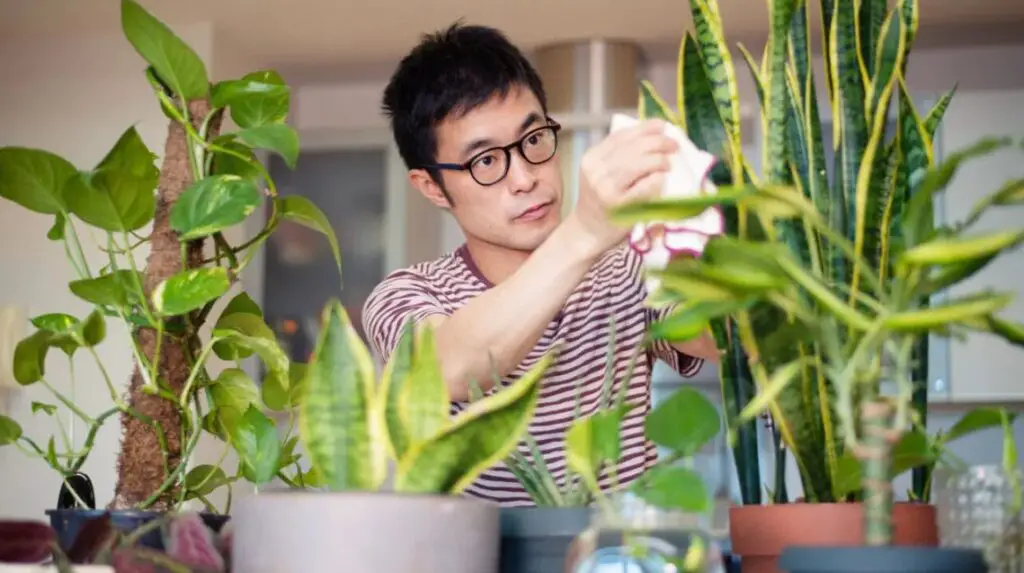
Tropical plants don’t have room in their leaves to store water because constant humidity and rain means they never have to. Since there is usually a lot of water, these plants can remove excess water from their leaves in a process called guttation.
Leaves have pores called stomata that essentially allow the plant to breathe. They absorb carbon dioxide and give off water vapor. It can be opened or closed depending on the humidity. But with longer closures due to dry air, the plants seem to be holding their breath!
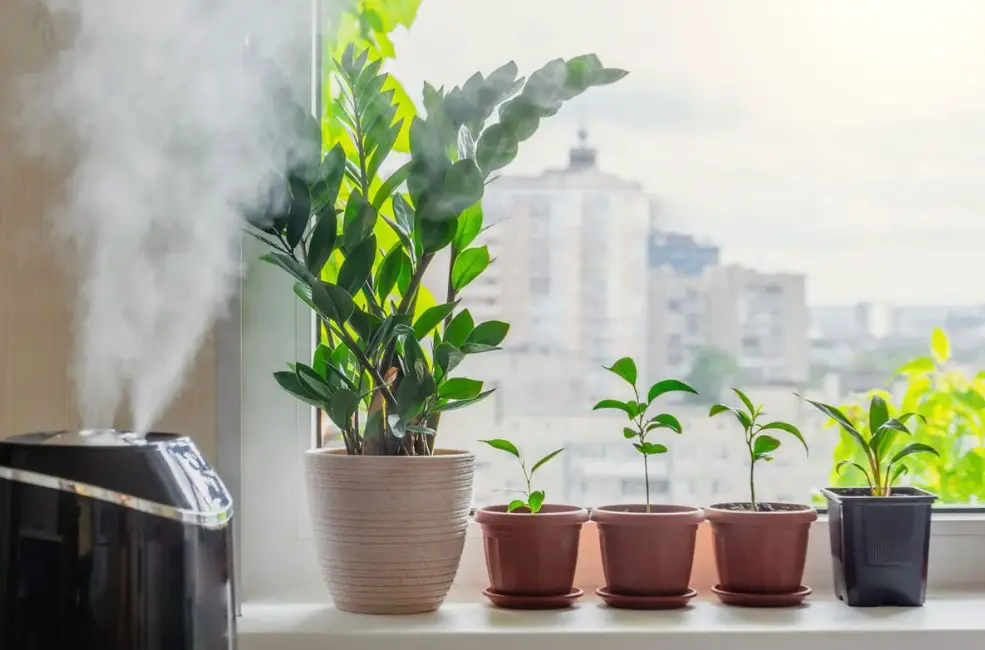
Why humidifiers are good for some plants
The humidity level indicates how much water vapor is in the air at any time. The higher the humidity in the air, the wetter it is. The smaller, the drier the temperature is also measured by the amount of water vapor in the air. Low temperatures don’t hold much water, and sufficiently cold temperatures cause condensation or freezing and little or no evaporation.
Tropical plants are accustomed to a high-growth rate environment seen with shedding, transpiration, and evaporation of all vegetation. Many houseplants that derive this value have shallow roots due to what happens in moist soil, and others have aerial roots that use the air or the bark and moss of the trees they cling to gain moisture.
Unlike desert plants like succulents, thick leaves store as much water as possible to survive without moisture from the environment.
I also recommend reading: Why is my humidifier spitting out water and how to deal with it?
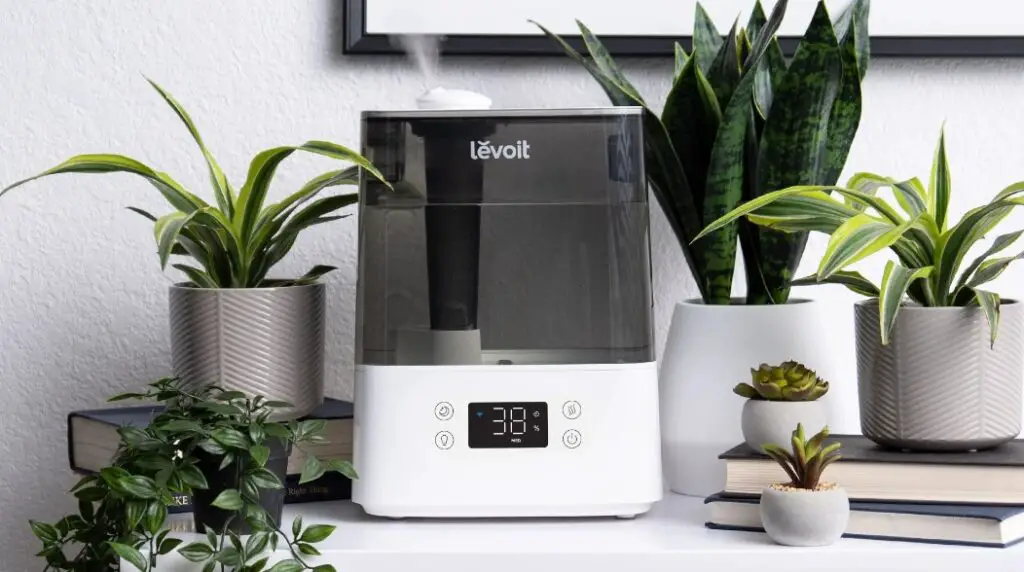
When should I use a humidifier for my plants?
You should be turning on your ultrasonic cool mist humidifier for your plants every morning and let it stay until around noon. This creates enough humidity in the air for them to last throughout the day.
Also, consider a cool mist humidifier gauge to get a better idea of what the humidity will look like. If it’s too low, you can always run the humidifier for a while to bring the humidity up to the recommended level for your plants.
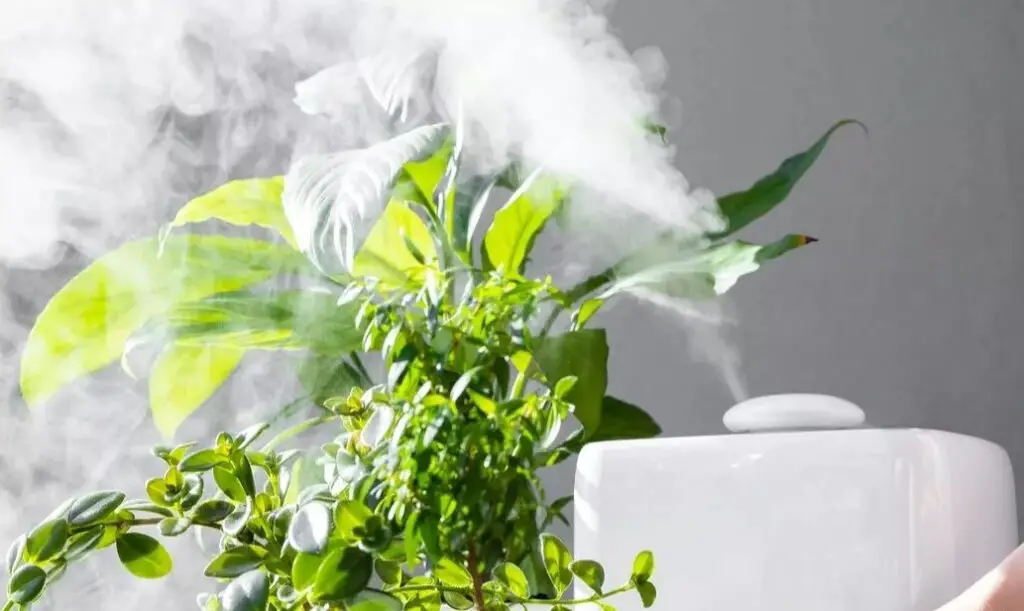
Whatever you do, don’t turn on your plant humidifier after sunset. Observe the high concentration of light and make them moist and sensitive. Excessive air density without a light source can also lead to the growth of harmful molds and mold stains.
What humidity do plants need?
According to a study, most indoor plants, with the exception of succulents, suffer when the humidity is below 20%. Most plants prefer a humidity level of 40 to 60 percent.
Cacti and succulents tolerate low humidity and grow even at 10-20%.
How do I make sure my plant has enough moisture?
To check humidity, you need a tool called a hygrometer. To get a more accurate idea of humidity, you should test next to the plant and elsewhere in the room.
You should also test the soil to make sure your plant is at the right level. You can see if it’s dry with your finger. When the first inch of soil is dry, it needs more water.

However, using a ground gauge is much more accurate. For the majority of plants, you want your soil to be moist, not soggy. This is especially important for indoor plants, as wet soil can cause health problems for the plant and cannot evaporate as quickly outdoors.
However, keep in mind that different plants require different moisture levels. One wants to be drier and the other damp.
What are the signs my plant isn’t getting the right moisture level?
When your plant is at a very low moisture level, it starts to stress. If you see wrinkled leaves and discolored or wilted stems, your plant needs more water.
High humidity also damages the plant. If you notice mold or fungus growing on your plant, or the soil never dries out, there is too much moisture.

Where should I place the humidifier?
The location of the humidifier for your plants is very important. If it’s too close, your plant may get too wet. On the other hand, a humidifier that is too far away will not provide the humidity that plants need to stay healthy.
It is best to place the humidifier at least 3 feet away from your plants and no more than 6 feet away. These numbers will vary depending on the amount of humidity your humidifier produces and the size of your room.
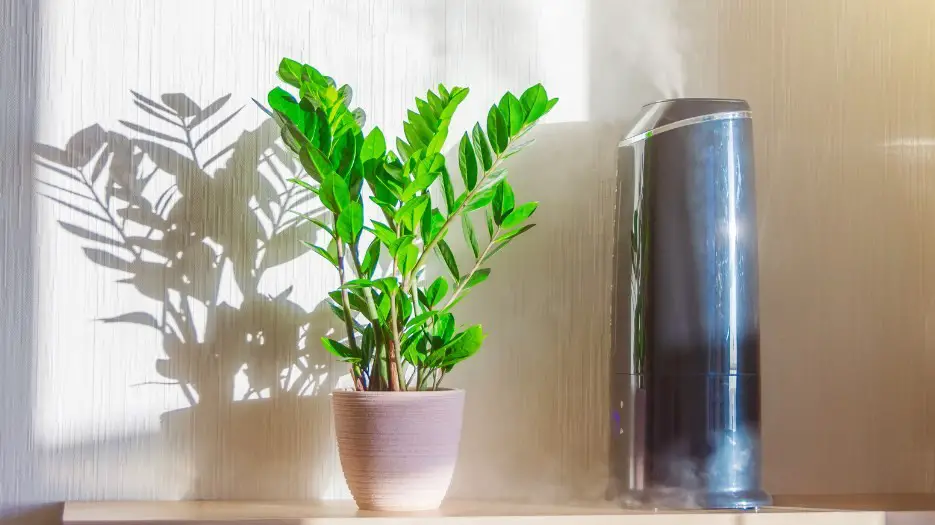
If you notice that your plant’s leaves are never dry, move your humidifier farther away. If your plant is too dry, move it closer.
Under no circumstances should the humidifier be placed on or under the plant. This causes excess moisture that damages your plant and makes it difficult for it to breathe properly.
Make sure your humidifier is pointed at your plants and not directly at them. This way they don’t get too wet. Some people recommend laying it over your plants to give them a warm mist.

Less humidity in the room
Now that we have a better understanding of how different plants grow in their natural climates, let’s take a look at your home environment.
When the weather is warm and pleasant, keep the relative humidity in your home between 40 and 60 percent. Suitable for most houseplants. However, in winter, when the heating is on, the relative humidity can drop to 10%.
Just as this dry air can lead to dry skin and sore throats, it can also harm your tropical plants, which need more moisture in the air.
Misting or Pebble tray is not enough
There is a popular theory that misting plants helps increase humidity. Unfortunately, this doesn’t work. Spraying plant leaves slightly increases the moisture in the air for a very short time. For this treatment to be effective, you must spray it every 30 minutes.
If you spray your plants in direct, bright sunlight, the remaining droplets can act like tiny magnifying glasses and cause leaf burns. Also, excessive moisture can take too long to evaporate overnight, acting as an open invitation for mold and mildew. No, thank you!

Misting is a great exercise for your forearms, and that’s about all it’s good for.
Placing pebble water bowls next to plants is another popular way to increase relative humidity. They work by supplying water around the plants. Over time, moisture in the air evaporates, increasing the relative humidity in the area.
A gravel bowl works better than a mist but isn’t as effective as using a warm mist humidifier.
How to know whether your plant needs high humidity or not
Indoor humidity in an average house is around 40-50%, which is normal for most plants. However, many tropical plants like humidity levels in the 50 to 75 percent range, so a humidifier can help bring that number up to a level where the plant will thrive.

Many air conditioner displays show the humidity level in your home, and digital thermometers usually have a built-in hygrometer as well. Your plants themselves may show signs of dry air. If you have been watering and fertilizing regularly and the plant is getting enough light but is still stressed, it could be humidity.
Some of the symptoms of low humidity stress include:
- Falling and withering of leaves
- Dried leaves
- Brown edges
- Brown spots
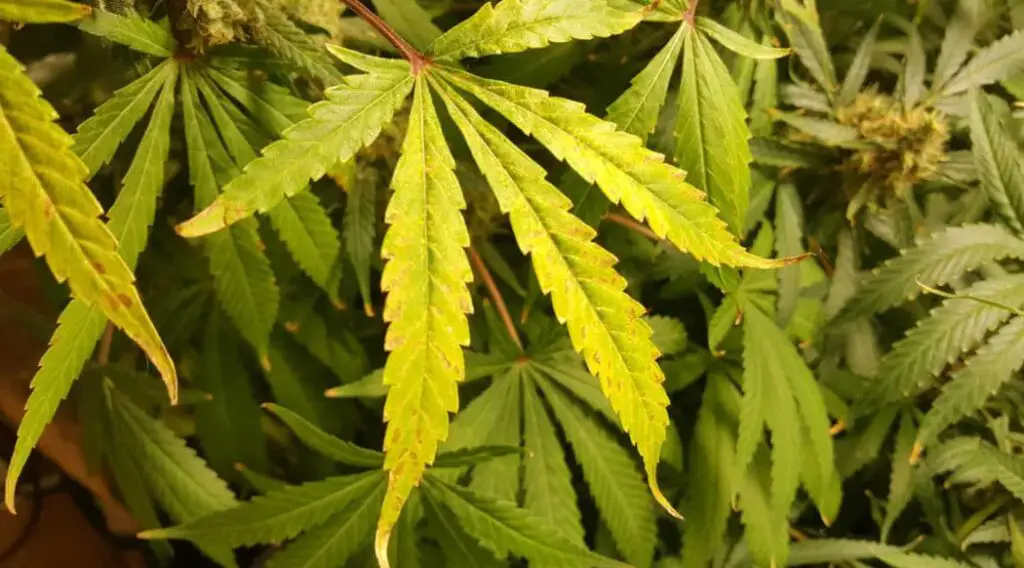
Some plants, such as cacti and succulents, do not like moisture at all, and plants with thick, tough leaves are especially vulnerable to mold or mildew if there is too much moisture in the air. Some of these are snake plants, jade, peperomia, pothos, and palm trees.
Plants that love moisture
Your tropical houseplants will love the warm mist humidifiers and the extra moisture every day. Some of these plants are:
- Anthurium
- Calathea
- Dracaena plant
- Ferns
- Ficus plant or fig
- Hoya or wax plants
- Monstera
- Orchids

How do you add/increase humidity to your plants?
There are a few simple things you can do to increase the humidity in your plants.
Get a humidifier
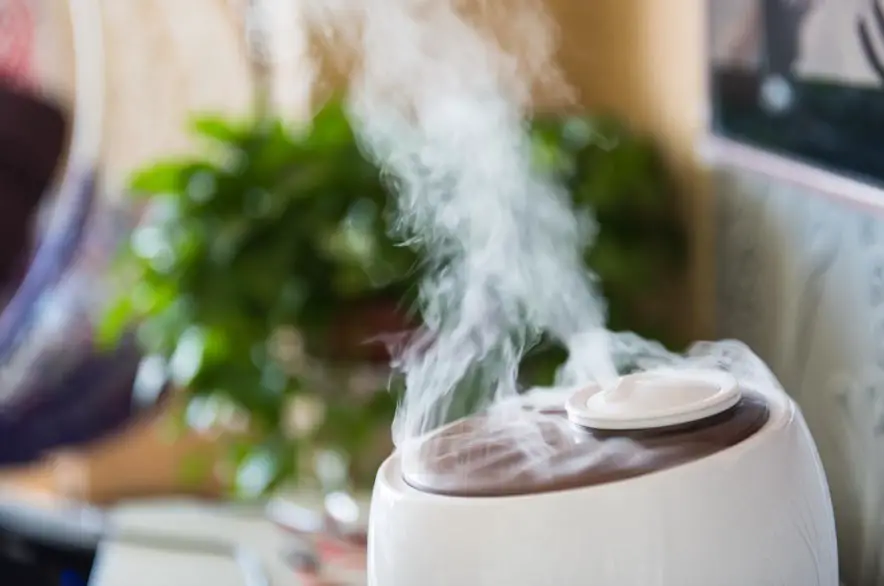
That’s what the article says, but — buy a humidifier. When it comes to increasing indoor humidity for your plants, a humidifier is the best permanent solution.
Make a moisture bowl

A moisture tray is a quick and easy project to keep your plants moist. It’s going to be a little confusing to delve into making a moisture tray, so I went ahead and found a short 2-minute video showing how to make one.
Group your plants
A final way to increase the humidity of your plants is to group them in groups.

Grouping your plants not only makes them and the surrounding area look better, but there’s the real science behind it!
When you group your plants, the moisture they give off essentially becomes trapped in this “bubble” and therefore retains some of that moisture!
FAQ
Do plants do better with a humidifier?
Yes, extra moisture will benefit most houseplants (as well as furniture and people). If you don’t want to buy a humidifier for your whole house or room, put a small vaporizer next to your plants.
How often should I run my plant humidifier?
The average humidity in a house is between 30 and 50 percent. Most plants need at least 50% humidity to stay healthy. To do this, you need to turn on the plant humidifier for an average of about 5 hours every day.
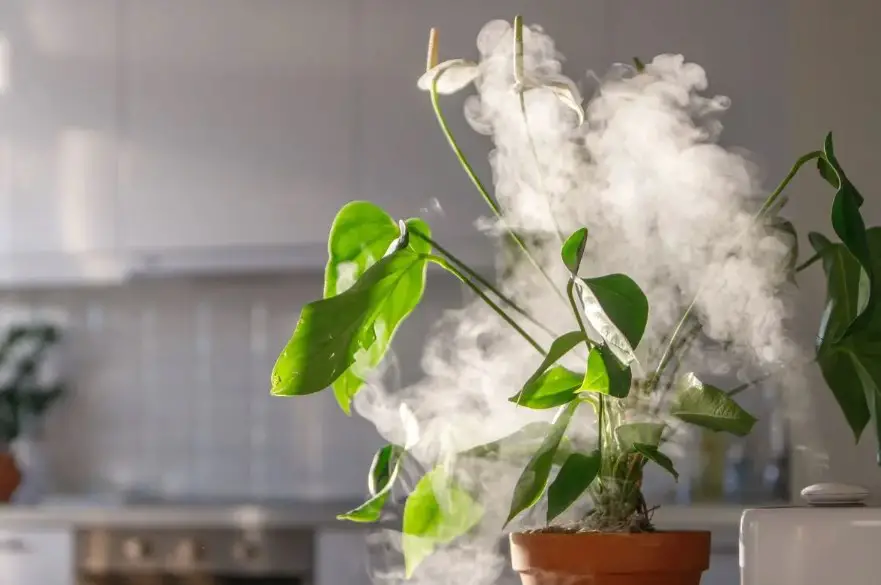
If you use a moisturizer, check the moisture regularly. If you notice that the humidity is getting too high, turn it on for a shorter period of time. In a climate with high humidity, there is no need to run it for a long time.
I also recommend reading Salt in humidifier: when can I put it and how?
Do plants need a warm or cool mist humidifier?
The mist temperature does not matter. Typically, the temperature is dropping by the time it reaches your plants.
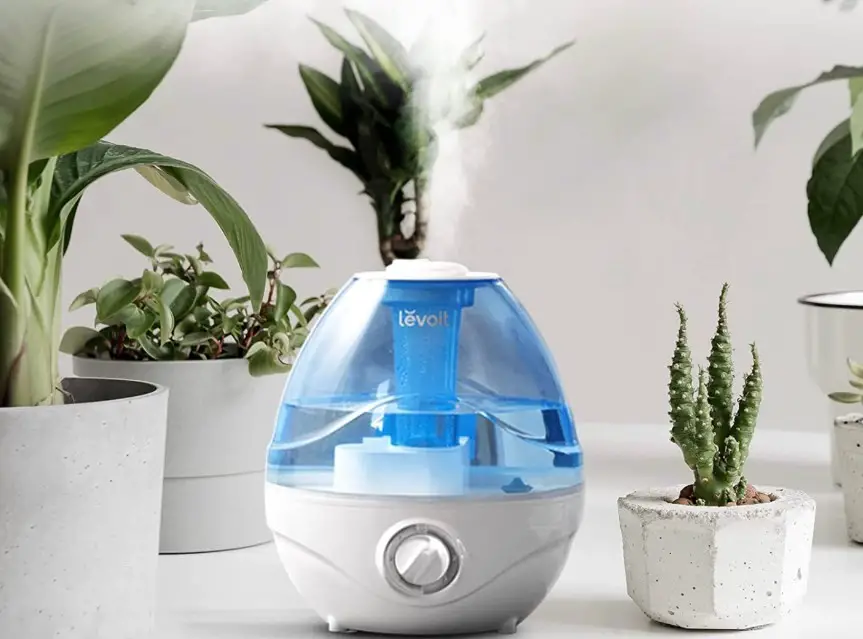
Some people prefer to use a warm mist humidifier because the heat prevents bacteria growth and warms the air. However, warm mist humidifiers require more energy to operate and can burn children and pets.
Cool mist humidifiers are more affordable but can have taller fans than heated humidifiers. They also require more cleaning than warm ones, since bacteria are more likely to grow in cold water.
Do plants need moisture at night?
Yes, plants enjoy moisture at any time of the day. However, if you don’t feel comfortable running your cool mist humidifiers at night, that’s fine. Just turn it on in the morning and check the hygrometer.
Conclusion
In this article, we learned that to keep your plants happy, you should use a humidifier for about 5 hours every day. We’ve also discussed that the humidity level in your home and the humidity level that the plant needs will affect how long it takes to reach the desired humidity level.
Read also: Humidifier tips: What kind of water to put in humidifier



